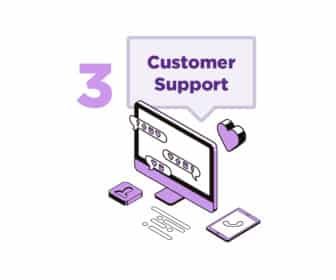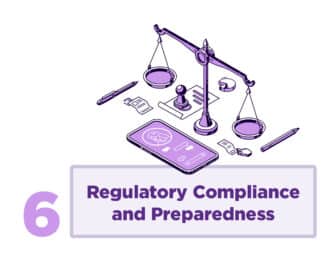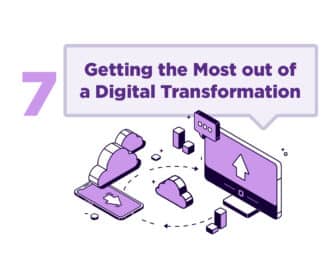Knowledge Management (KM) is presently experiencing a rebirth, with greater executive interest and organizational commitment. Driven by the post-Covid transition to hybrid and remote work, the employee churn during the great resignation, and the explosion of AI driven by knowledge graphs and large language models, the value that KM offers is better understood, and KM initiatives are being prioritized like never before.
At EK, we’ve worked tirelessly over the last decade to ensure KM is understood for the business value it offers and considered in terms of practical solutions and measurable results. We’ve found that defining use cases is one of the best ways to help organizations understand this value, and moreover, prioritize what really matters for them, their mission, and their stakeholders.
There is a lot of writing about KM outcomes, or features, but there is a surprising dearth of writing regarding Knowledge Management Use Cases. In this article, I’ve captured the top ten use cases for KM Transformations. It’s important to note that these aren’t enabling features or software like search or online discussions, nor are they expected outcomes or results like improved findability, knowledge sharing, or knowledge retention. Rather, these are the actual use cases, the reasons why people do KM and what it actually means to the organization’s operations and people.
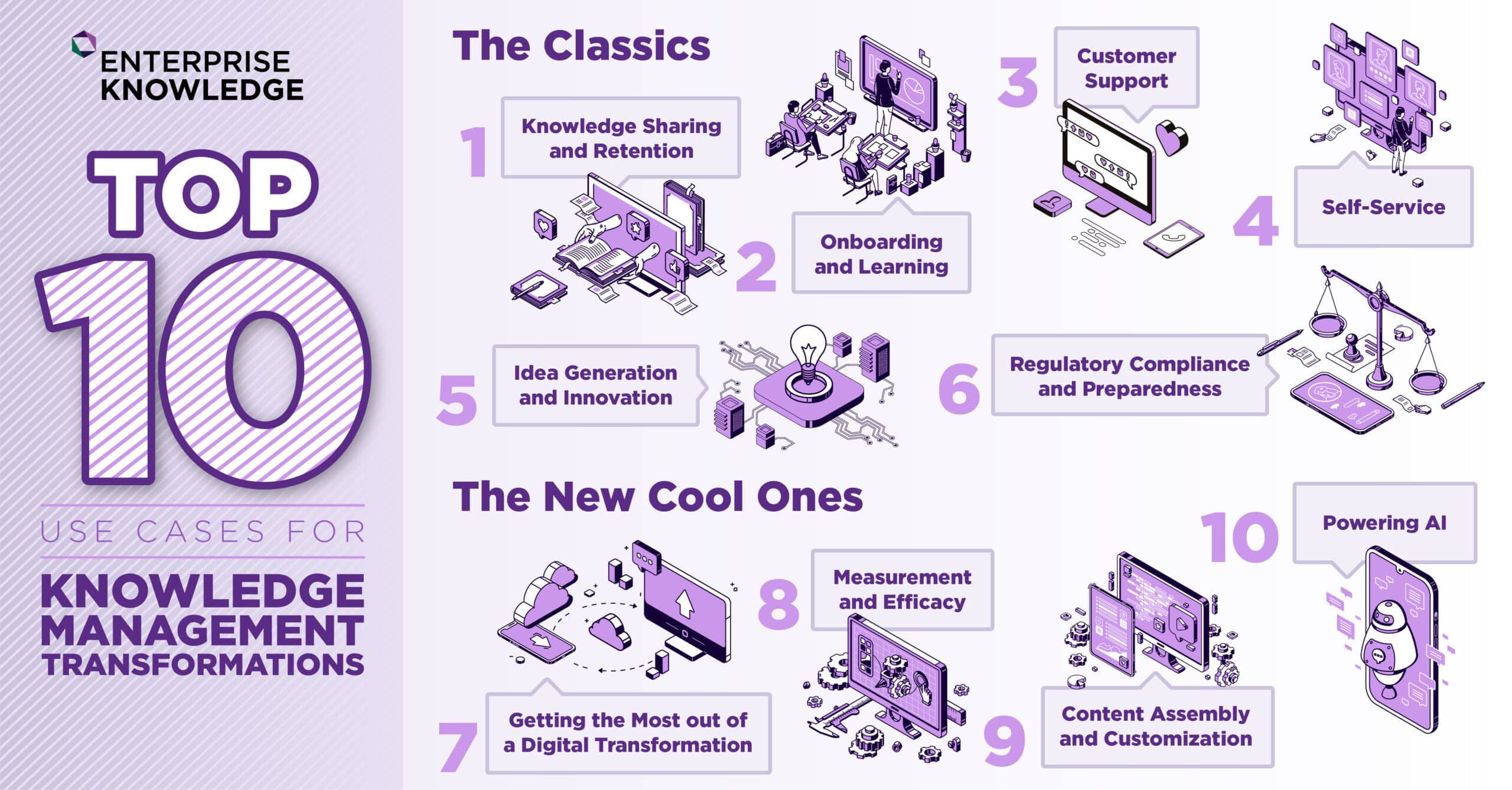
Of the top ten Knowledge Management use cases, six are what I’d consider “classics,” in that they’ve been present as the leading use cases for much of the short history of KM. The other four are the cool new ones, which are presently driving the industry and will be top organizational priorities for the near future as well.
The following six are the “classic” KM use cases. They hold as much value today, if not more, as they always have. The solutions and technologies we can apply against these use cases have changed over the years, though the use cases themselves remain largely the same.
Use Case #1: Knowledge Sharing and Retention
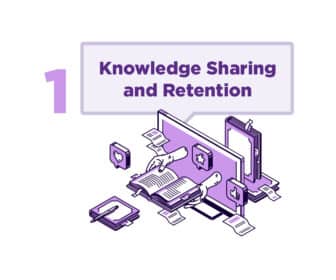
Perhaps no use case is more central to KM than Knowledge Sharing and Retention. Organizations have consistently sought to retain the knowledge and expertise held within the minds of their employees. This tacit knowledge walks out the door with employees if not properly shared with others or transferred into an explicit format that may be captured and managed. KM for Knowledge Sharing and Retention will counteract this “brain drain,” ensuring that information is shared, used, and reused, thereby improving the collective knowledge of the organization and saving countless hours that otherwise would have been spent re-creating lost knowledge (or worse yet, repeating mistakes already made).
Real World Example:
We recently led a “Knowledge Transfer Menu” effort with a global development bank, which was concerned with their increasing attrition at all levels, recognizing their expertise and associated experience was walking out the door. Given the wide number of potential knowledge transfer and sharing techniques, we worked with them to develop a menu of different techniques, allowing them to quickly test a selection of each, ranging in scale, type, and complexity (none, limited, or high technology) to determine what would be most natural to their unique business and employees—to facilitate knowledge sharing either one-to-one, one-to-many, or as a larger community. As a result, the organization adopted a subset of the Knowledge Transfer techniques to establish enterprise wide, and we helped them implement a simple knowledge base to ensure this new knowledge would be managed and easily findable.
Use Case #2: Onboarding and Learning
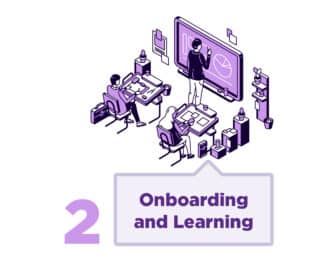
To be fair, onboarding and learning could easily be considered two separate use cases, but both are solved by many of the same solutions and tend to produce similar outcomes. The Onboarding and Learning use cases are all about providing the employee with everything they need to perform, from day one of their job through the entire employee journey. This is much more than employee self-service. The Onboarding and Learning use cases cover the delivery of knowledge at the point of need, connecting learners with teachers or experts, and guiding a learner to develop and extend their knowledge. Effective Onboarding and Learning will result in employee satisfaction, which further leads to higher employee retention.
Real World Example:
A large public agency was seeking to transform from a traditional to modern learning environment. With a highly distributed workforce, the agency needed an innovative means of helping their employees of all levels and tenures connect and learn from each other. We designed and implemented an advanced learning platform for them that integrated all elements of their learning and performance ecosystem so that any employee could intuitively find and discover classes, self-serve learning content, experts, and cohorts with which to engage. The result was a single place for employees to craft their learning journey and managers to track and manage these journeys, while also capturing new knowledge through communities of practice and learning cohorts.
Use Case #3: Customer Support
The Customer Support use case covers call centers, help desks, and the associated knowledge bases responding agents use to deliver concise, complete, and consistent customer service. This use case addresses common customer complaints that they were “bounced around” from person to person, given inconsistent guidance, had to repeat themselves, and were stuck in “on hold” purgatory. Just as the Onboarding and Learning use case results in employee satisfaction and retention, the Customer Support use case results in customer satisfaction and retention. Moreover, appropriate customer support can yield higher revenues and faster deal close times, depending on the industry.
Real World Example:
One of the largest insurance companies in the United States found that nearly half of their help desk calls were unresolved, requiring escalation or follow-up. Not surprisingly, less than 30% of their customers were satisfied with overall customer support. We helped to reengineer their customer support systems by designing a new tagging structure and taxonomy for their knowledge base, implementing new content governance for their knowledge base content, and creating new incentives and measurements for their agents to identify and improve lower-end knowledge base content. As a result, their Tier 1 call resolution improved to nearly 80%, with similar trends for overall customer satisfaction.
Use Case #4: Self-Service
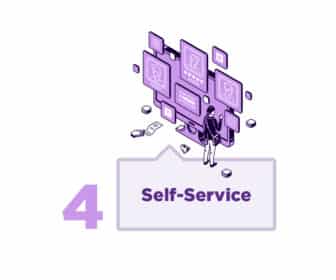
This use case connects to the two preceding, in that it may be either employee self-service or customer self-service. As the name states, this use case is creating easy and intuitive mechanisms to get the right people the information they need, without having to make a call, send an email, or otherwise rely on others. Generationally, end users are increasingly wanting to get their questions answered or complete their desired action via self-service. This use case delivers the right knowledge, information, and data at the point of need, and when delivered properly, does so quickly and intuitively. Self-service can be a major cost saver for an organization, while also improving user satisfaction and delivering a more complete and more customized “answer.”
Real World Example:
One of the world’s largest employers recognized their host of employees was struggling to get fast answers to simple HR and payroll questions. As part of a 360-Degree Employee Satisfaction effort, we helped them redesign their employee self-service system, including the ability for employees to crowd-source questions and answers to a variety of questions, up-vote ideas and priorities for management, and independently track and complete simple changes to their benefits and employee data.
Use Case #5: Idea Generation and Innovation

In an increasingly distributed world, the opportunity for water cooler meetings and moments of professional kismet are waning. The Idea Generation and Innovation use case counteracts those trends, creating KM-driven opportunities to share knowledge, ideas, problems, and challenges, invoking the collective expertise of individuals to help. This use case isn’t just about coming up with the next “Flamin’ Hot Cheetos” scale of idea, but also about day-to-day problem solving, small ideas, and incremental wins that can collectively make a big difference for an organization and its performance.
Real World Example:
A leading software company dramatically shifted to a largely remote work environment following the pandemic. However, they recognized that this sudden and permanent shift would eliminate many of the natural opportunities for the “water cooler talk,” moments of happenstance collaboration, and whiteboard innovation that had previously helped them to thrive. We helped them envision and execute a complete menu of techniques to help them transition to remote work while continuing to collaborate and innovate. This included new traditions like virtual brown bags and topic-based online meetups, new tools for synchronous and asynchronous collaboration, and new processes to capture knowledge at the point of generation and deliver it at the point of need.
Use Case #6: Regulatory Compliance and Preparedness
This use case isn’t about addressing the lack of knowledge, information, or data within an organization; rather, it’s about addressing the proliferation of bad knowledge, information, and data. Many organizations have a poor handle on their content, maintaining years of old, obsolete, and incorrect legacy content, which exposes them to undue risk. For some organizations, this presents a regulatory risk, which if unaddressed can result in millions of dollars of fines, lawsuits, and accidents. Successfully implementing this use case not only addresses these types of risks and costs, but it also vastly improves the findability and manageability of content by removing all the potential wrong answers and dead ends.
Real World Example:
During an audit, a global manufacturing company in a highly regulated industry identified a major risk to their operations, finding scores of obsolete, outdated, and incorrect information hosted on their servers. We helped them engineer a content audit and cleanup process to confront this risk, which included a blend of system analytics, automated semantic analysis, and targeted expert reviews to eliminate their “bad” content and also enhance and promote “good” content to new systems so that it could be better leveraged. This process not only removed or archived over 80% of their total content, it also highlighted hidden gems of lessons learned and thought pieces that helped the organization maintain their expertise.
The final four KM use cases are the cool new ones, which have gained great traction only recently and promise high value and organizational prioritization for years to come. These are the ones that are getting the largest budgets and most attention today.
Use Case #7: Getting the Most out of a Digital Transformation
The previous decade was marked by massive investments in digital transformations, with organizations seeking to fundamentally update their processes and systems with streamlined technologies and more “online” modes of work. Millions were invested in these transformations, but few organizations reported the results they were expecting. The missing piece for many was KM. Though systems and processes had been updated, insufficient attention was paid to the core content and means of harnessing organizational expertise. This use case focuses on ameliorating those omissions by helping the state of an organization’s knowledge, information, and data “catch up” with the digital transformation.
Real World Example:
A global pharmaceutical company invested millions of dollars in a digital transformation—modernizing, consolidating, and integrating their assorted document, content, and data management systems and implementing a leading enterprise search product. As the multi-year transformation was well underway, however, the organization was not realizing the return on investment they’d anticipated. We conducted an assessment of the organization and helped them pinpoint the critical points of knowledge, information, and data management that would help them realize true business value. These included design and implementation of taxonomy/ontology with auto-tagging of content, improved knowledge capture workflows, design and implementation of search hit types, and a knowledge retention measurement plan. Within six months, they were capturing the returns they’d initially expected from the overall digital transformation.
Use Case #8: Measurement and Efficacy
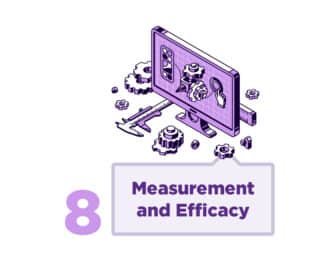
Keying off of previous use cases, with millions invested in digital transformations, more advanced delivery systems and interfaces, and greater customization, organizations are asking whether they’re getting the promised returns and desired impacts to their business. Though always an important question for a business to answer, in the face of a recession, this becomes all the more critical. This use case seeks to answer that question by delivering detailed insights into how people are using an organization’s content and what they’re doing as a result. Are people learning as they should? Are they taking the appropriate actions as a result? This use case delivers a comprehensive view not just into usage, but impacts, allowing organizations to make the right decisions as a result.
Real World Example:
A global financial organization had invested heavily in the creation of an array of new multichannel learning and performance content, as well as improved analytics to track its usage. They had the new content and data, but they lacked the insights to understand it and make decisions as a result of it. We worked with them to go beyond measurement of usage to measurement of efficacy, plotting out the desired impacts and outcomes of each learning topic, then creating measures of performance for each. In cases where the outcomes weren’t reached, we developed processes to engage internal stakeholders and external subject matter experts to help address the underlying issues with the learning content, creating a consistent and positive learning loop to help the organization’s learning environment evolve. We also identified opportunities to use this same process to identify gaps in organizational knowledge and leveraged the same approach to proactively fill those gaps.
Use Case #9: Content Assembly and Customization
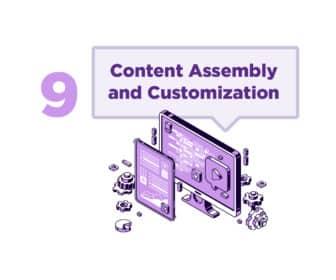 The Content Assembly and Customization use case addresses one of the long-standing issues with many organizations’ content. Too frequently, organizations that have focused on systems and processes have overlooked the reengineering of their content to be more consistent, readable, and customized to the user. This use case focuses on deconstructing content into more structured components that may then be reassembled in more intuitive and personalized ways. There are many potential applications and audiences for this, but the binding concept is that every individual will get just that which applies to them in a clear and concise way.
The Content Assembly and Customization use case addresses one of the long-standing issues with many organizations’ content. Too frequently, organizations that have focused on systems and processes have overlooked the reengineering of their content to be more consistent, readable, and customized to the user. This use case focuses on deconstructing content into more structured components that may then be reassembled in more intuitive and personalized ways. There are many potential applications and audiences for this, but the binding concept is that every individual will get just that which applies to them in a clear and concise way.
Real World Example:
A big box retailer with highly complex logistics and a massive fluctuation of employees was constantly struggling to keep key documents like employee handbooks, required safety documents, learning materials, and store-specific guidelines up to date. We worked with the organization to deconstruct this content and then build a content assembly engine to automatically create customized documents for each individual based on their home store, geography, role, and dozens of other factors. This drastically reduced human error and administrative burden while delivering a more customized experience to the individual stakeholders.
Use Case #10: Powering AI

The hottest new use case is no doubt around AI. Most every conversation seems to involve an organization’s vision for their own Chat GPT, bespoke large language models, and organizational Artificial Intelligence. The questions tend to be the same in many of these organizations. How do we make AI happen? This use case is the enabler for organizational AI, creating the structured content, knowledge maps and ontologies, and integrated systems that will truly make AI real for these organizations in their production environments across the enterprise.
Real World Example:
For many years, we’ve worked with a global development bank to progress towards Knowledge Management maturity. Over the years, we helped them clean up their content, design and apply an enterprise taxonomy, improve their knowledge capture techniques (for consistency and completeness), and implement more consistent information architectures. Each of these KM initiatives yielded its own value for the organization, but the culmination of the work was the creation of a knowledge graph powered by an ontology and connected to the key content and data stores across 12 different applications. This solution allowed them to realize an array of Artificial Intelligence capabilities, including an intelligent chatbot, a recommendation engine, and an application to identify at-risk knowledge topics in the organization, triggering prioritized knowledge transfer and capture techniques.
At this moment, the organizational understanding of KM continues to increase, executives show a growing willingness to support and invest in it, and the associated technologies continue to progress to help KM Transformations become a reality. These use cases can all be faster, easier, better, and more tangible than in the past, making the overall opportunity for meaningful KM Transformations as high as it has ever been.
For more details and use cases visit Enterprise Knowledge.

